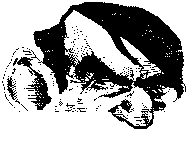|
[images
added by this website]
The Arizona
Republic
Thursday, June 3, 2004

Chinese
tanks, flattened tents and debris, Tiananmen
Square, June 1989
New Account
debunking "massacre" at Tiananmen
by Robert Marquand
Christian Science Monitor
Beijing -- On the 15th
anniversary of one of the most cataclysmic events
in modern China, a wealth of eyewitness testimony
and interviews suggest that one stubbornly popular
picture of what happened in Tiananmen Square needs
revision:
There was no massacre of students in the square.
Standard histories such as that by Yale's
Jonathan Spence, as well as the recent
groundbreaking Tiananmen Papers, suggest
that Chinese soldiers did not fire on students
before they left the square in the early hours of
June 4, 1989.

David
Irving comments:
I HAVE seen other
seemingly reliable accounts of that day
which suggest that the massacre story is
western propaganda.
|
A massacre did take place in Beijing 15 years
ago, eyewitnesses say -- just not in Tiananmen.
What is famously known as the June 4 massacre
actually began on the evening of June 3. The night
was cool and windless, eyewitnesses remember.
The student uprising that shocked China's
leadership with calls for democratic reform and
that captured the attention of the world was nine
weeks old by then. One exhausted protest leader
remembers retiring at 10:15 p.m. on June 3 in one
of hundreds of makeshift tents in the square,
unaware, in a pre-cellphone era, that army columns
were already rolling in on a westerly road.
In two hours, from midnight t 2 a.m., the
slightly riotous, unorganised festival of meetings
and exhilarated free speech in the square became a
grim confrontation with an army that surrounded the
students and that was using live rounds against
citizens in neighborhoods all over the city.
Early wire reports, including a second-day
account by a Tsinghua student, now widely regarded
as disinformation, and several assertions to the
media by student leaders who were not present,
planted some of the misconceptions that persist
today.
A British reporter (who left the square at 1:30
p.m.), for example, wrote a widely read account
based entirely on secondhand sources who claimed a
massacre took place in the square.
As few as ten foreigners actually witnessed
events in the square during the crucial
early-morning hours of June 4, according to
eyewitnesses interviewed by the Monitor and
an unpublished 52-page document complied entirely
in the weeks after by Robin Munro (then of
Human Rights Watch) and Richard Nations (a
Le Monde reporter) of 14 testimonials of
journalists, diplomats and students present in the
square after midnight.
 Despite
orders that the People's Liberation Army was to
clear Tiananmen Square using whatever means
necessary, there is no credible eyewitness
testimony of a massacre of students there. No
eyewitnesses at the Monument to the People's
Heroes, where students were centered, ever saw
one. Despite
orders that the People's Liberation Army was to
clear Tiananmen Square using whatever means
necessary, there is no credible eyewitness
testimony of a massacre of students there. No
eyewitnesses at the Monument to the People's
Heroes, where students were centered, ever saw
one.
No "rivers of blood" flowed in the square. No
rows of students were mowed down by a sudden rush
of troops, as reported in European, Hong Kong, and
U.S. publications in the days, months and years
that followed. The actual number of students and
citizens killed in the square may be as low as a
dozen, according to the documents and the
eyewitnesses. The medical tent in the square,
originally used to comfort student hunger strikers,
reported at least ten deaths.
Rather, between the morning hours of 4:45 and
6:15, about 2,000 to 3,000 students filed off the
square through a cordon of troops, protected by a
line of their own ranks who linked arms. There was,
however, a massacre in Beijing, during the four
days starting June 3.
It took place at street intersections, in Hutong
neighborhoods, in the alleyways around the square
and in the western part of the city, where
resistance to the deployment of the army was
strongest. Moreover, the victims were not only
students, but ordinary people who were outraged
that the soldiers of a people's army had been given
warrant to shoot the people.

- Tiananmen
Square massacre links

|